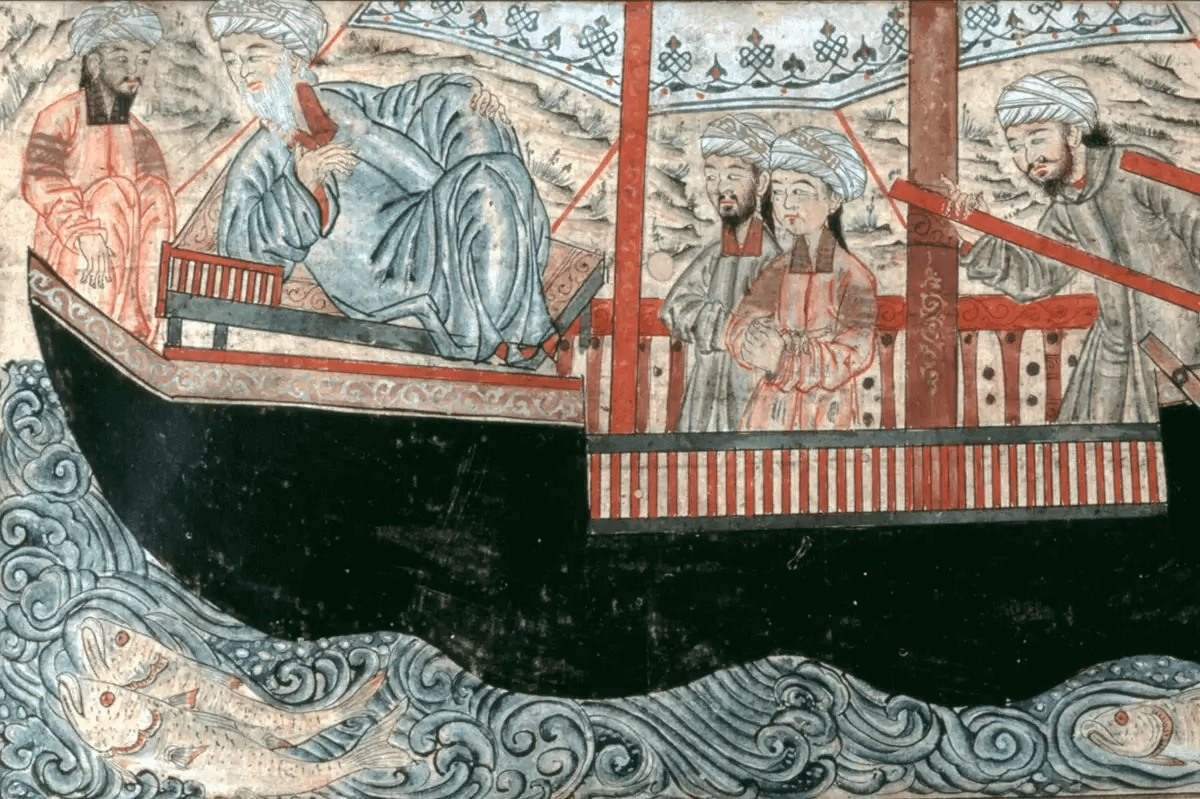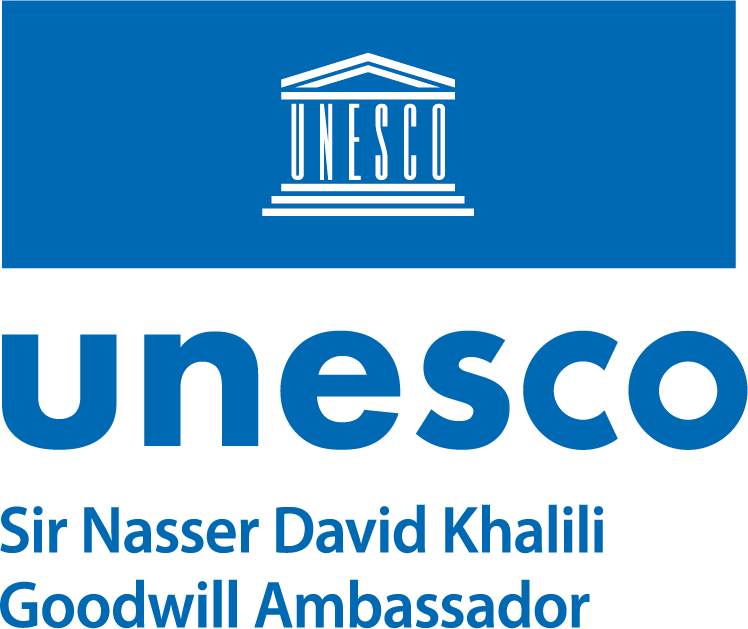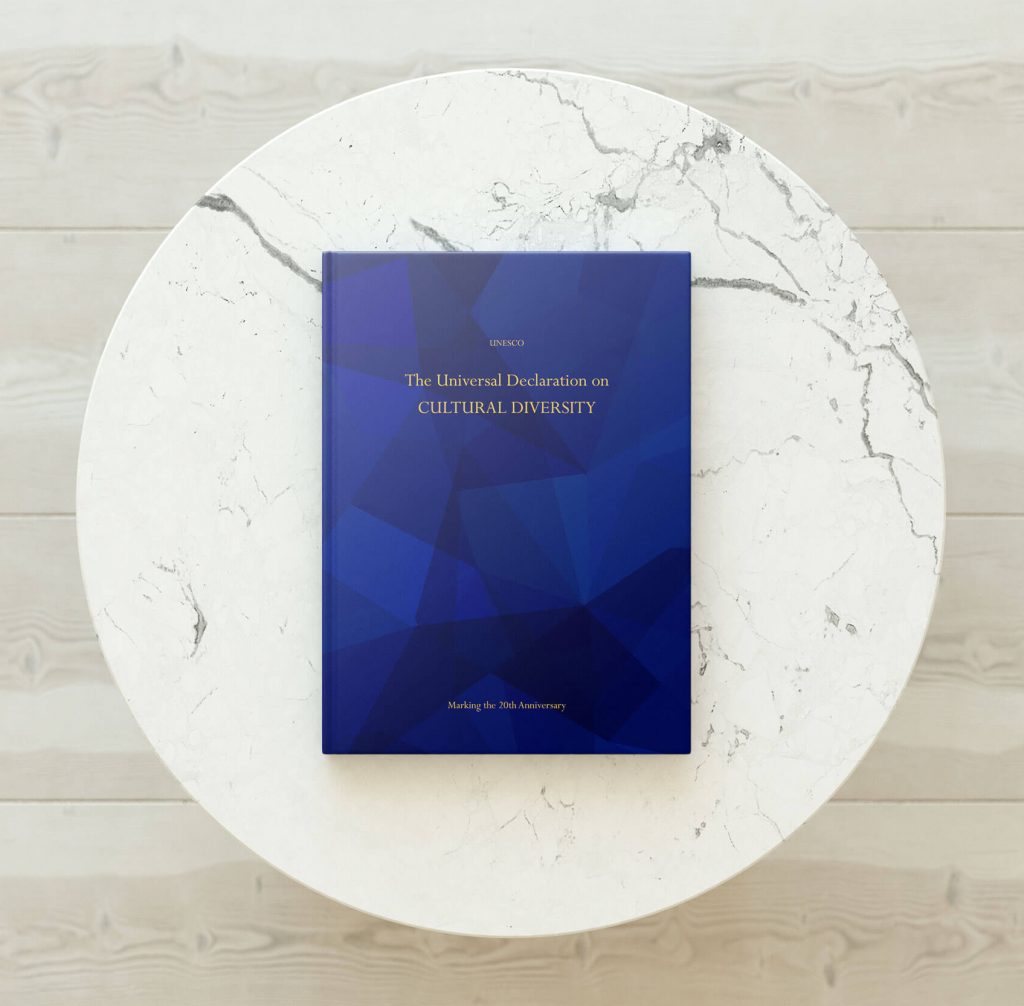
Diversifying Cultural Content Online
Wikipedia is the dominant reference site on the internet, providing educational material freely and without adverts, in hundreds of different languages. As part of its cultural philanthropy, the Khalili Foundation promotes the diversity of visual culture on Wikipedia and the other Wikimedia sites by sharing images and research, by employing a Wikimedian In Residence, and by helping students, researchers, and institutions share their knowledge.
Although Wikipedia has an enormous amount of information about the Western canon of visual art, it is much weaker on the art of other cultures. Research published in 2023 found a large cultural gap in favour of Western art on Wikipedia and its sister sites. The eight Khalili Collections, already extensively digitised and published, are ideally placed to document art from cultures that are so far under-represented.
Our Wikimedian in Residence
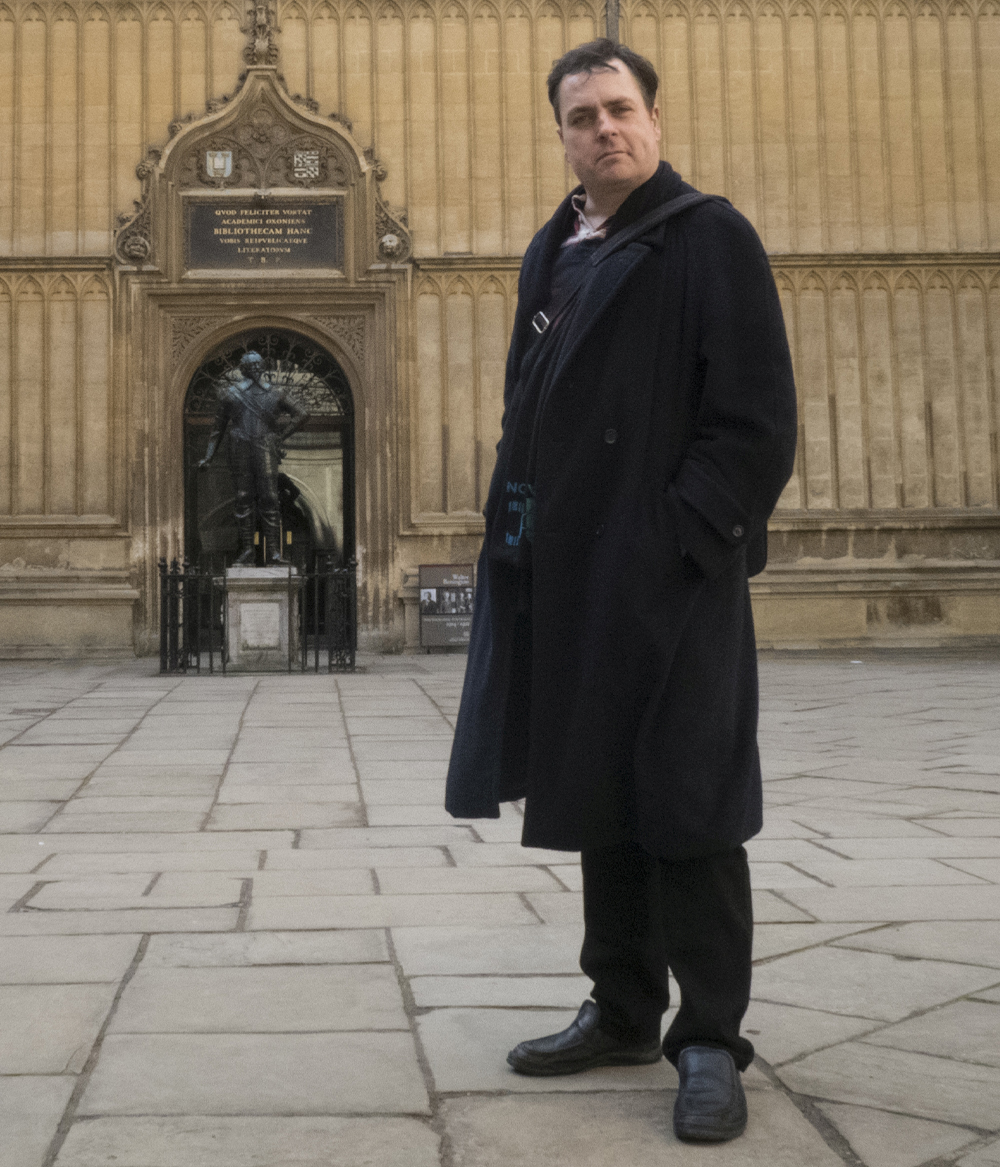
Dr. Martin Poulter
Dr Martin Poulter
Dr Martin Poulter has degrees from the universities of Oxford and Bristol. He is the former Wikimedian In Residence at the University of Oxford, where he worked with the collections of the Bodleian Libraries, the Ashmolean Museum’s Jameel Centre for Islamic and Asian Art, and the History of Science Museum. A Wikipedia editor since 2005, he has made more than twenty thousand edits to English Wikipedia and more than 900,000 to other Wikimedia projects. He is an accredited Lead Trainer for Wikimedia UK and has regularly presented at conferences about how researchers and cultural institutions can work with Wikimedia. In 2016 he was awarded UK Wikimedian of the Year and in 2021 made an Honourary Member of Wikimedia UK.
Impact so far
Working with Wikipedia’s volunteer contributors, the Wikimedian has added dozens of new Wikipedia articles in seven languages. Hundreds more articles have been improved with images, extra facts, or citations. The Khalili Collections images shared on Wikimedia Commons are used in eighty different language versions of Wikipedia and in other educational materials, illustrating more than 300 topics in total. These images reach an enormous audience, getting three to four million image views per month: far more than would be possible through visitors to exhibitions
Artists including Namikawa Sōsuke, Hatip Mehmed Efendi, and Yabu Meizan have had Wikipedia articles created or improved. Topics including Islamic pilgrimage and Japanese fashion are now covered in greater depth and with rich visual examples. Interesting facts from new articles have appeared in the Did You Know panel on Wikipedia’s front page (see box). The Khalili Collections text and images have been very warmly welcomed by Wikipedia editors, winning eighteen Featured Image awards and seven Good Article awards.
The impact is not limited to Wikipedia. Ten thousand statements about art works have been added to Wikidata, where they can be read by people or by software. This open data set allows free applications that interactively explore art, including Crotos and Histropedia, to present Khalili Collections objects alongside other art works.
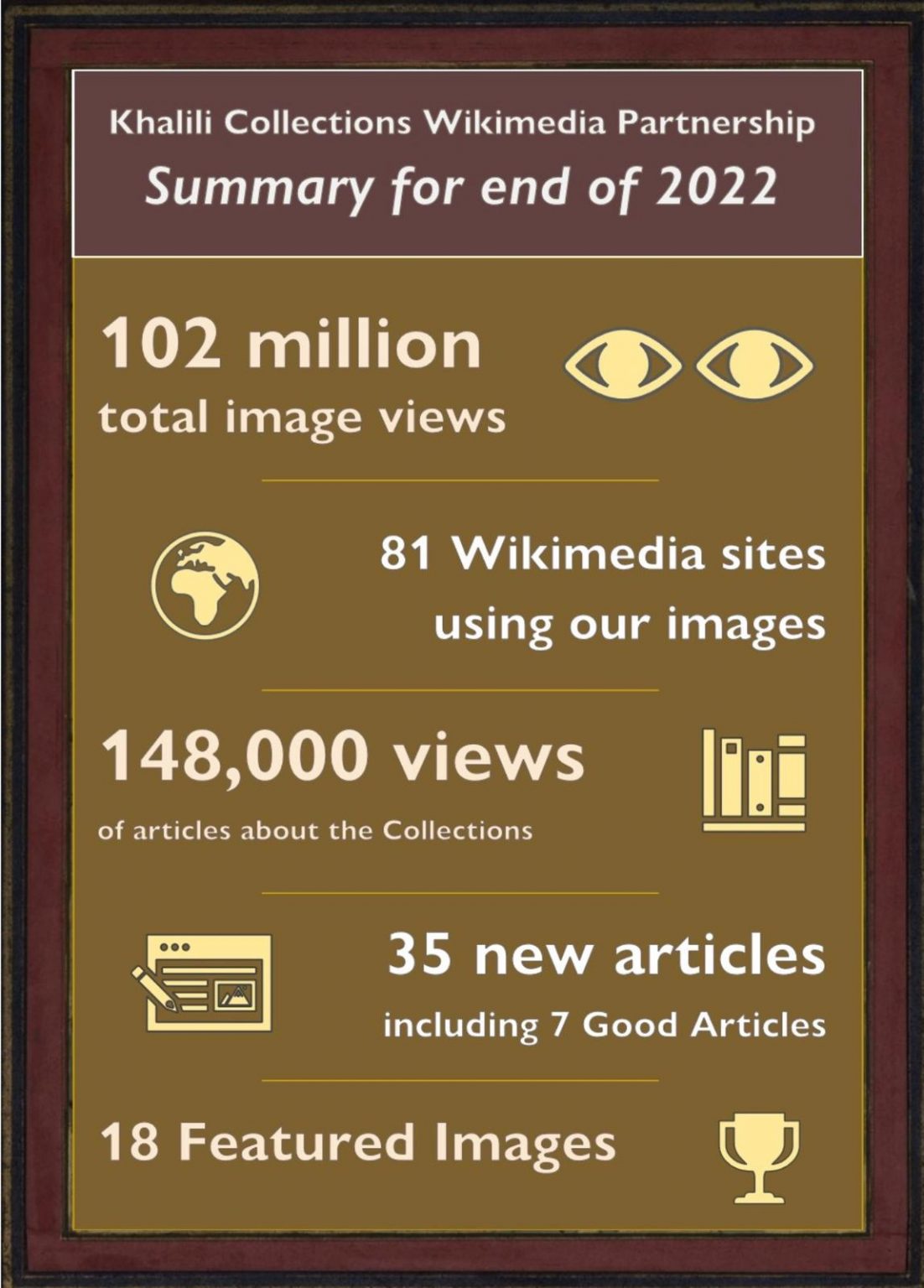
For more information and monthly updates about the partnership, see the project page on Wikipedia.
In the Media
Noah’s Ark, from the Jami‘ al-Tawarikh of Rashid al-Din (MS 727), copy from 1314–15. (Credit: Apollo Magazine)
Around the world in 35,000 objects – and a handful of clicks
A square vellum Qur’an produced in Valencia in 1199–1200 AD is written in regional Andalusi script by a relatively unknown scribe. Its cover bears a complex lattice structure stained in a burnt ochre that has darkened with age. It is modestly illuminated compared to the shimmering gold on an 18th-century Ottoman paper Qur’an, the naskh script of which is enclosed by sumptuous and fluidly undulating borders featuring a colourful thicket of floral designs.
Did you know?
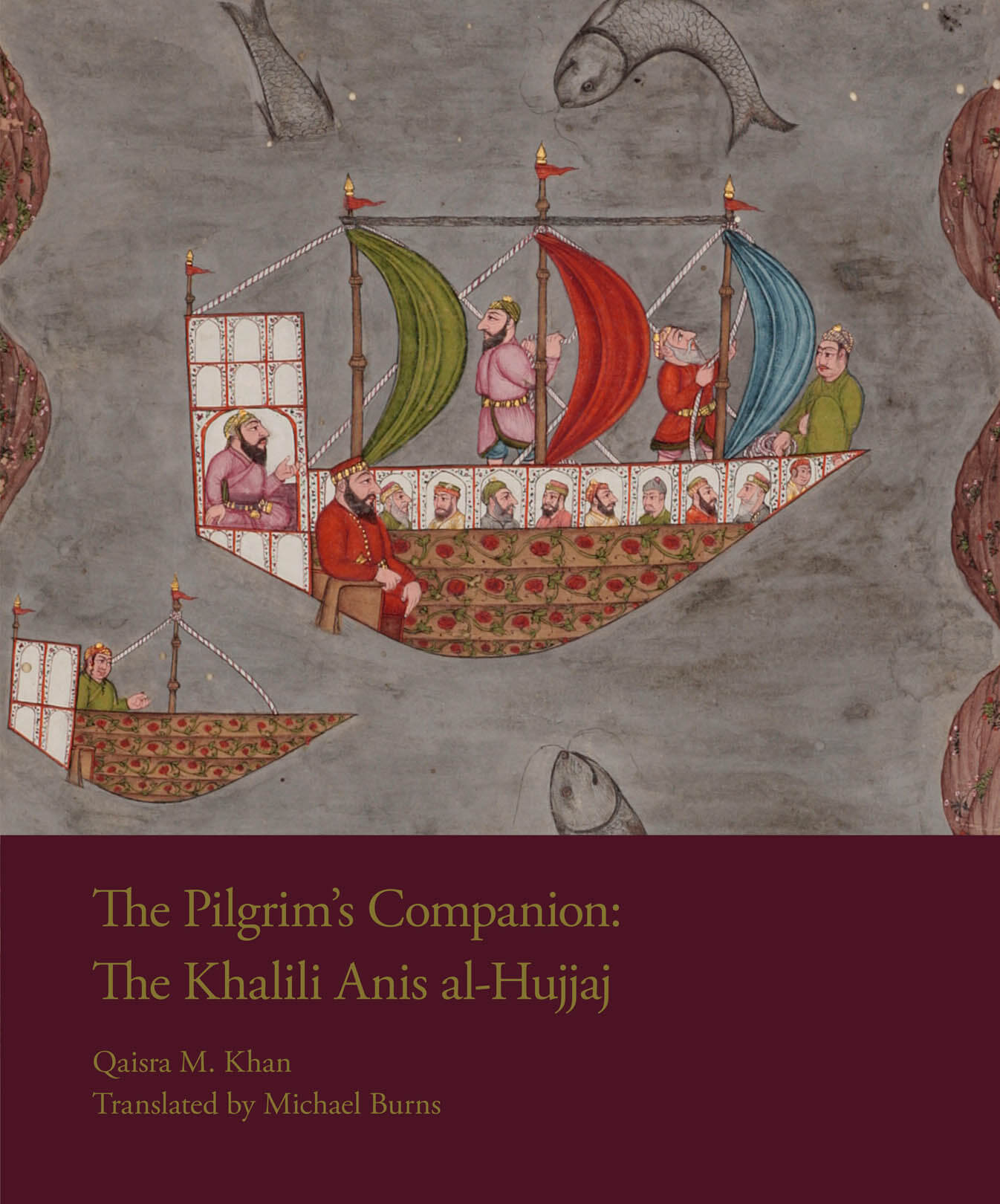
Khalili Collection Hajj and Arts of Pilgrimage: Pilgrims crossing the Sea of Oman, from the Anis Al-Hujjaj
that the UNESCO Universal Declaration on Cultural Diversity includes value systems, traditions, and beliefs in its definition of culture?
that Muhammad Sadiq‘s photographs were the first ever taken of the Islamic holy sites in Mecca and Medina?
that on their display in Chicago in 1893, the vases of the Khalili Imperial Garniture were described as “the largest examples of cloisonné enamel ever made”?
that a 17th-century illustrated manuscript of the Anis Al-Hujjaj shows pilgrims sailing from the Indian subcontinent to Arabia?
World Festival of Cultural Diversity

Research published in 2023 found a large cultural gap in favour of Western art on Wikipedia and its sister sites. Although the integration of content from the Khalili Collections is a major step towards redressing this cultural imbalance, the Khalili Foundation is going further by driving an effort to encourage more individuals and institutions from non-Western countries to freely share their knowledge.
As part of the World Festival of Cultural Diversity, the Foundation is holding edit-a-thon events where students, researchers, and enthusiasts can learn to add their own knowledge about visual art to Wikipedia.
We are also encouraging other cultural institutions to share their art on Wikimedia platforms. The Khalili Collections have become an example to the sector in this regard; by sharing one and a half thousand high-quality images and related data, the Collections have greatly extended their own reach and are helping to show the public the beauty and variety of non-Western art.
Join Us
If you are already a wiki contributor, you can join us to fill gaps in Wikipedia’s coverage of the visual arts. Take a look at the Global Visual Art task force or the Khalili Collections images.
We are also looking to work with cultural institutions that hold art outside the Western canon. By sharing selected objects on Wikimedia sites, the Khalili Collections have greatly expanded their visibility and promoted a truly global perspective on visual art. This success shows what other cultural institutions can achieve, and we are keen to share our lessons, especially with institutions that have not so far worked with Wikimedia. If you represent such an institution, please get in touch by emailing director@khalili.foundation.

